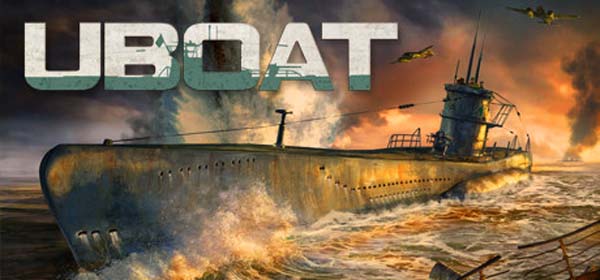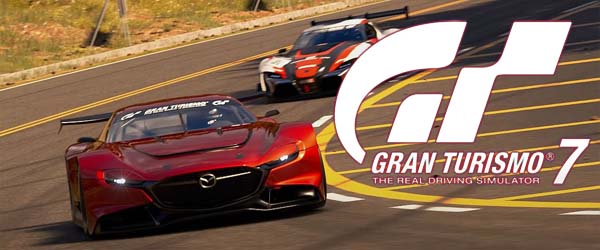
I haven't been able to organize as many board game sessions as I would have liked to over the past 2 years, thanks to the ongoing COVID pandemic. By the time vaccinations were widely available, and we were willing to have more frequent gatherings, many of my board-gaming friends had returned to work. Many work irregular hours, so it's hard to organize games. And despite limiting gatherings, we still suffered our own COVID infections, and several other potential exposures that forced us or our friends into self-quarantine for a week or two, resulting in the cancellation of some board game plans. And of course, having an infant to take care of doesn't make organizing play dates any easier.
Despite not being able to play board games as much, I've still been buying board games, in the hopes that eventually we'll be able to overcome the need for social distancing and will be able to have larger game sessions again. One such game that I bought last summer is U-Boot: the Board Game, which is an app-assisted World War II submarine management game. The rulebook and "tactical guides" are massive, and the game looks lengthy with a steep learning curve. It's not the kind of game that we can play in an impromptu session. It requires preparation, and a lot of time to practice.
As such, I haven't been able to play it yet. I only downloaded the app and played around for a bit to try to learn the rules. Hopefully I'll get to play an actual game soon.
In the meantime, I decided I could maybe get my U-boat fix by buying and playing a totally different U-Boat: the Game, which is an early-access PC game on Steam. It has no relation to the board game, but feels like it could be.
U-Boat is still in early access when I played it. I'm not sure when it's supposed to come out of early access, but it seems like it's fairly complete and should be ready soon. I don't usually go for early access games. As any reader of this blog will know, I take a [possibly overly] critical view of the games I play, and playing an "incomplete" game can be a frustrating experience. I don't want the frustration of incomplete mechanics and frequent bugs to sour my opinion of a game to the point that I'm not willing to play it at all when it is eventually complete. For instance, I never went back to games like No Man's Sky after playing it on release. It wasn't early access, but it might as well have been considering how shallow and incomplete it felt. No matter how much my friends insist that it's better now, I just don't have the motivation to play it again.
I bought the U-Boot board game, and started reviewing the rules, but haven't been able to play it.
But I was itching for some U-boat action, and the user scores looked good, so I gave this one a try. This game is so "indie", I couldn't even find a website for the development studio; just some social media accounts on Facebook and Twitter.
Early access tutorial
One area that I hope gets a lot of attention before this game leaves early access is the tutorial. Despite taking hours to complete, the tutorial still left me feeling woefully unprepared for the game proper. U-Boat's tutorial teaches the basic mechanics of the game well enough. It taught me how to navigate my sub, how to submerge, how to assign orders to crew, and how to shoot enemy ships and planes using the automated mechanics. What it doesn't teach is any of the actual strategy or technique for operating a World War II submarine, nor does it teach any of the advanced, manual mechanics (like manual torpedo targeting).
How do I deal with escorted convoys? How do I approach without being detected, while still being able to get close enough to identify the ships and attack? Once I launch my torpedoes, what do I do next? Do I wait at periscope depth to confirm the kill? Do I immediately submerge and run away? How do I escape pursuing destroyers? How do I evade depth charges? If I'm hit by a depth charge, what do I do? None of this is explained by the tutorial. I had to spend several Saturday afternoons trying to figure all this out through trial-and-error by save-scumming a single random encounter. It was incredibly frustrating, and I barely had the patience to keep playing.
Tutorial teaches basic mechanics, but isn't effective at teaching strategy.
The early missions don't help ease the player into the game either. I did like 10 patrol missions in "The Black Pit" (the first and "easiest" campaign area), and only encountered a single convoy in the patrol areas, and was only able to sink 1 ship. I would zig-zag around the patrol area, but would never find any enemy contacts. On the way to or from the patrol area, I would often get radio requests to sink a transport with rare tech on board. These would often be escorted by multiple destroyers and a crap-ton of smaller corvettes, and as soon as I would sink one ship, those 3 or 4 destroyers would converge on my exact position and sink me with depth charges. [More]

Readers of my blog and viewers of my YouTube channel may be familiar with my series on "How Madden Fails To Simulate Football". In the second and third episodes of that series, I discussed how Madden's binary blocking logic, and the ability of QBs to hit any receiver anywhere on the field with the push of a button, leads to unrealistic pass rushes and inflated sack stats. Pass rushers either have next to no impact on the play, and the QB can throw a dime to anywhere on the field; or the pass rush gets home for a sack. An aggressive pass rush in Madden does not force a QB to have to throw early or off-platform and result in an off-target pass. Or at least, Madden's attempts at emulating this reality of football often feel poorly-defined, arbitrary, and inconsistently-applied. It hasn't been since the QB Vision Cone of 06 that Madden has really come close to getting this right.
This is where a little, pixel-art indie football game called Legend Bowl really shines (see my full review). With one simple, elegant mechanic, Legend Bowl has managed to emulate the idea of a panicked QB having to release an off-target pass before he wants to, in order to avoid the pass rush. You see, Legend Bowl employs a charge-up mechanic for determining the power and accuracy of passes -- and the same mechanic is also used for kicking.
This entire essay is also available in video format on YouTube.
The QB can still throw to any receiver with the push of a button (although there is a "QB Vision" mechanic, but it doesn't work like Madden's old QB Vision, and we'll talk about that a bit later), but the QB needs to hold the button for a split second in order to charge up the throw. Release the button too early, and the throw will be an under-powered, floaty, lame duck of a pass that will sail over the target's head, or be easily picked off by zone defenders. Hold the button for too long, and the throw will be "over-charged", which results in a severe accuracy penalty. The pass will likely be a laser beam directly into the dirt -- the football equivalent of a gutterball.
Ideally, you always want to charge your throw to 100% power, without overcharging and taking an accuracy penalty. However, that is easier said than done when a 300-pound defensive lineman is charging right at you. This is where Legend Bowl respects the pass rush in a way that Madden hasn't come close since the days of its QB Vision Cone. If the defense gets pressure, the QB doesn't have time to hold that button down and fully charge the pass, which will lead to more floaty, inaccurate throws. Inversely, panicking because you see a defender break free of his block at the last second can distract the player's brain just enough to mis-time the charging of the throw and over-charge it for an accuracy penalty. This is especially true on higher difficulty levels, in which the meter charges faster and the accuracy penalty is greater.
Pressure can rush throws, making them less accurate, and preventing the QB from putting his full power behind it.
Best of all, as far as I can tell, the CPU-controlled QBs are also bound by this mechanic. They also, as far as I can tell, have to take a split second to charge their throws. And if they don't have time to fully charge the throw, they too will throw a wobbly floater of a pass that sail over the receiver's head, or be swatted down or picked by a defender waiting in a nearby zone.
[More]

I could've played Miles Morales on the PS4 back when it was released in November of 2020, but I really wanted to wait until I got a PS5. So I waited. And waited. Eventually, my number on Sony's waiting list came up, and I got a PS5 just in time for Christmas. Miles Morales, Demon's Souls, and Returnal were the first games I bought for it.
Early set pieces put a large emphasis on protecting civilians and reducing collateral damage.
If you liked Marvel's Spider-Man for the PS4 -- and who didn't? It was great! -- then Miles Morales is largely more of the same, but with the distinct urban flavor that comes with the Miles Morales story, and a story about corporations using "not in my backyard" politics to exploit under-privileged communities. Combat is virtually unchanged, aside from a few new gadgets and powers, and the locomotion is even more identical. So pretty much everything positive that I had to say about that game also applies to this game, and I'll try to keep this review short by not retreading the same praise and critiques.
There is a greater emphasis early in the game on trying to protect civilians. This is a welcome change, and I wish Miles Morales would have gone a bit further with it. Protecting civilians is a large component of early setpieces, but it is largely dropped once the story gets started proper. It's a shame that this isn't carried through into the rest of the game, since a major theme of the story is Miles serving as a protector for the under-privileged, mostly ethnic minority, population of Harlem.
Spider-Man has always been a hero for the common folk,
but this Spider-Man is also a hero for the under-privileged and down-trodden.
Christmas vacation
The campaign itself is also considerably shorter than the first game, taking place entirely during the Christmas season. I have mixed feelings about that. On the one hand, it's nice to have a more focused, 20 or 30 hour campaign. I have other shit to do, and it's nice to be able to finish a game's story without feeling like I have to play it every waking moment of my free time for weeks or months on end. And that 20-30 hours isn't just the story; I actually completed 100% of the side activities in that time as well.
On the other hand, playing as a younger Spider-Man just learning the tricks of the trade would seem like it would be well-suited to a longer, multi-faceted campaign with a series of escalating challenges and threats. It would have been nice to see Miles start out by focusing more on fighting petty crime in the Harlem area and adjacent districts, before moving onto more widespread organized crime, and then finally the super villain threats. There's no such escalation in Miles Morales' story. It jumps straight into the big super villain story and relegates all the "friendly neighborhood" stuff to simple side quests.
Insomniac wastes no time getting to the supervillain plot.
This does also mean that it gets its super villain surprise twist out of the way early, since it's a twist that is almost as obvious as the appearance of Doctor Octopus in the previous game. On the topic of the super villain "twist", I did find it annoying that a large part of the conflict depends on the Tinkerer making such a big deal about Miles' perceived dishonesty, but the Tinkerer wasn't exactly forthcoming either. Yet Miles never points this out.
Considering how polished Marvel's Spider-Man felt, despite also having a much bigger story and more side content, I was surprised to find a number of side quests in Miles Morales that were broken. This was doubly-surprising considering that I'm playing the game well over a year after its release. That's plenty of time for Insomniac to have fixed these bugs, even if they only have a handful of people doing maintenance on the game, while the rest of the team works on Marvel's Spider-Man 2 and Marvel's Wolverine. Even more concerning is that the specific side quests that broke for me were all related to the F.E.A.S.T. storyline, which is the most narratively and thematically important line of side quests in the game. I would think these would be the most stable and polished side quests in the game.
[More]
556903ac-0173-4a4a-90af-ae55457a53ff|0|.0
Tags:Spider-Man, Miles Morales, Marvel's Spider-Man: Miles Morales, Insomniac Games, Sony, PS5, Marvel Comics, Peter Parker, open world, New York, web-swinging, civilian, venom, Tom Holland, Dual Sense controller, adaptive trigger

I used to love the Gran Turismo games. I played the shit out of Gran Turismo 1-3. I think I was even close to hitting the 100% completion threshold of GT2 (well, the max 98.2% because the game was bugged and it was actually impossible to get to 100%). 1 and 3 in particular are great games in their own right, and still hold up well today. Gran Turismo 4, however, is when the series started to lose me, due to several changes to the design philosophy of the game that all converged to make it less appealing to me as a matter of personal enjoyment.
I was able to get my hands on a fancy new PS5 over the holidays, and I'm looking for games to play on it, and also technical showcases to see what the fancy new hardware can do. I was especially curious how a simulation racing game would feel on the Dual Sense controllers, with its variety of haptic feedback features. I could see a lot of potential in that genre of game. So I bought Gran Turismo 7 for pretty much this reason alone. It was a little bit for nostalgia too. This game celebrates the 25th anniversary of the series itself. So I went ahead and purchased it for old time's sake.
I was even tempted to buy the Special Edition to get the bonus Toyota Yaris. I figured the Yaris is probably the closest I'll come to being able to drive my real-life Toyota Echo within the game. However, I suspected that if Gran Turismo 7 would be anything like GT 4 or GT 5, it would be giving away cash and cars like candy. So I didn't see any value in the other special edition bonuses, like the extra credits. I sure as hell wasn't going to spend $20 for just one virtual car that I would probably race a handful of times for its novelty before switching to more powerful cars.
A Toyota Yaris GR is already available in standard edition, so I don't see any value in the special edition.
But there's already a GR Yaris in the game anyway, so I'm not sure what is so special about the Special Edition car. Besides, the Aqua and Prius look more like my car anyway. In any case, I hate special edition bonuses, and pre-order bonuses, and retailer-specific content. It's such a cynical fucking slap in the face to us consumers to have content withheld from the game unless we buy a specific edition, or buy from a specific vendor.
Feeling the road in my hands
Anyway, I bought the game to hopefully be a showcase for the technical innovations of the PS5. Of all the games I so far own on the system, none of their use of the PS5 controller's tactile features have really lived up to the promise of the Astro's Playroom game that comes included with the PS5. I was hoping that being a Sony-exclusive, flagship title, Gran Turismo would really wow me. It does do some neat things, but I don't know that I would say that it "wow" me.
This game requires finesse with the gas and brake.
I didn't really start noticing the rumble feature effects until I got further into the game and was playing with much more powerful cars. Up until then, the rumble was mostly reserved for if I hit the rumble strips on the side of the road or actually went off the road, or if I lost traction or spun out. But it felt similar to typical video game rumble. When the cars started to get more powerful, however, I started noticing some additional rumble effects. The engine would vibrate the controller a bit more, and I would also feel a soft thud from the middle of the controller whenever the car would shift gears.
The adaptive triggers do a little bit more heavy lifting. The throttle will stiffen up if the car starts to lose traction or if trying to accelerate up a steep incline, especially in inclement weather. Even in ideal conditions, smashing the gas and hitting top speed in a straightaway will also make the controller feel unstable in my hands, sometimes to the point that I'm genuinely afraid that if I turn the steering wheel at all, I'll instantly lose control and spin out.
By the time I feel the car slipping in the rain, it's already too late.
This actually causes me to loosen my grip on the trigger and throttle down, which usually restores some stability to the car. Instead of completely losing control because I have no way to know just how lose my car's hold on the road is, the adaptive trigger helps me to maintain control by signaling that I am throttling too hard. Pulling my foot off the accelerator pedal a little is exactly what I do in real life if I start to feel my car losing its grip on the road (which happens quite often in the gusty winds of Las Vegas), and that instinct is exactly replicated in the game.
More generally, the adaptive triggers make it uncomfortable to jam on the accelerator or the brake, especially for an extended period. It really encourages slowly depressing each trigger in order to better control the acceleration or braking of the car. Again, this mirrors how a real-life car is controlled. This makes all inputs feel much more deliberate and controlled.
Steering can be done with the motion sensor.
9 and 3
The real surprise highlight of playing Gran Turismo with the Dual Sense controller is steering the cars with the motion sensor. I'm not sure if this option was available in Gran Turismo 5 or 6 on the PS3 and PS4, or if it's available on the PS4 version of Gran Turismo 7, but this is a totally new way of driving a video game car for me. And I'm actually genuinely surprised by how well it works. I chose the motion control option after I booted up the game for the first time, thinking it would be borderline unplayable, and I would switch back to the traditional analog stick steering. But holy hell, I actually stuck with it!
The motion sensor is surprisingly responsive and maps reasonably well to the motion of holding a steering wheel at 9 and 3 o'clock positions. Using this control method, and the first-person cockpit camera, I had little-to-no problem keeping my car in a straight line and steering it through corners. I even got a gold medal on all but 1 of the B-1 license tests (and all but 3 of the A-1 license tests) using the motion controls for steering.
Steering with the motion sensor is surprisingly responsive and accurate.
It is a little awkward to hold for longer races. Holding down the throttle and brake triggers can be a little bit uncomfortable, especially if I'm trying to use my middle finger for them. And trying to use other face buttons often results in my car veering a bit. Holding the controller out in front of me (where a real steering wheel would be) can also be tiring after lengthy races. Not being mounted to a dashboard means I can't rest my hands on the controller the way that I would on a steering wheel.
[More]
766fde51-f127-42a2-b7b4-fd18b028443f|1|4.0
Tags:Gran Turismo, Gran Turismo 7, Sony, PlayStation 5, Dual Sense controller, adaptive trigger, motion control, haptic feedback, Polyphony, car, history, racing, driving, steering, collecting, Pokemon, pre-order, micro-transactions, grind, always online, Toyota Yaris, Toyota Echo

After releasing 2 full expansions every year since the launch of Cities: Skylines, expansions seemed to dry up after 2020. Sunset Harbor released in March of 2020, and there hasn't been any full expansion since then. I'm not sure if this is the result of Colossal Order shutting down its studio temporarily during the COVID-19 pandemic, or if they have just been busy working on a sequel. I had assumed that Cities: Skylines was done, and that Sunset Harbor would be the final expansion for the game. But that is not the case, as a new expansion was finally released at the end of January 2022.
The Airports expansion is yet another expansion pack using the area-painting mechanic that was introduced in the Parklife expansion in 2018, then re-used in Industries and Campus in the subsequent years. As such, I don't know that I really have much to say about Airports. A lot of the same compliments and criticisms that were already applied to Parklife, Industries, and Campus also apply here.
Campus, ironically, did not teach Colossal Order any lessons
The modular nature of the airport buildings, taxi paths, and runways provides quite a bit of customization. There are 3 styles of airports: a retro-style, a modern style, and an "ultra-modern" style. They are functionally the same, so don't fill different roles the way that different parks, industries, or university types did in their respective expansions. The airports are massive and expensive, but they can be shaped to fit into irregular spaces in or around your city. Unfortunately, there's not nearly as much expressiveness as what we were offered by Parklife.
Airports come in different styles, and are customizable (parking lots and garage are mod assets).
Of course, Airports suffers from the same problems that have plagued the previous expansions that used the leveled-areas concept.
A lot of the modular components are simply decorative and have no function other than to increase the area's abstract "attractiveness". In the case of airports, these include the various hangars, parked planes, and so forth. Even the air traffic control tower is a purely decorative object, rather than being necessary for the airport to work!
I've also never liked how the park areas (and now the airport areas) level up by increasing the total visitors, and industries level up based on the total goods produced. This is something that is easy to achieve by simply waiting in-game months or years for the number to go up, regardless of the size or quality of the park, industry, or airport. Because of that, it can be easy for an airport to jump out ahead in total visitors, such that the area can be leveled up immediately, and at any time, by simply placing new structures that bring the attractiveness up above the required threshold.
Airports level up based on the total passengers, which can be easily increased by simply waiting.
Instead, I wish these areas would level up based on the weekly visitors (or good produced, for industries), rather than the cumulative total. This is a much better metric of the capacity of a park, industry, or airport. This is one of the things that the Campus expansion did a bit better than the others, since the universities level up based on the current number of students and the number of research projects. The amount of students is capped by the size of the school, and the research projects are semi-randomly created based on the funding levels and access to research facilities.
Airports aren't like that. Leveling them up feels much simpler and requires less effort and management from the player. Airports also cannot de-level (like universities could) if you fail to maintain its attractiveness, and since total passenger count is something that can never decrease the way that a university's student attendance can decline -- or the way that weekly passenger count could potentially decrease. [More]
9d933baf-f859-49f8-9255-79e2379ce105|0|.0
Tags:Cities: Skylines, Cities: Skylines: Airports, Colossal Order, Paradox Interactive, steam, PC, expansion, airport, airplane, airline, hotel
|

| 12 | | | | | | | 60 | | 11 | | | | | | | 55 | | 10 | | | | | | | 50 | | 09 | | | | | | | 45 | | 08 | | | | | | | 40 | | 07 | | | | | | | 35 | | 06 | | | | | | | 30 | | 05 | | | | | | | 25 | | 04 | | | | | | | 20 | | 03 | | | | | | | 15 | | 02 | | | | | | | 10 | | 01 | | | | | | | 05 |
|